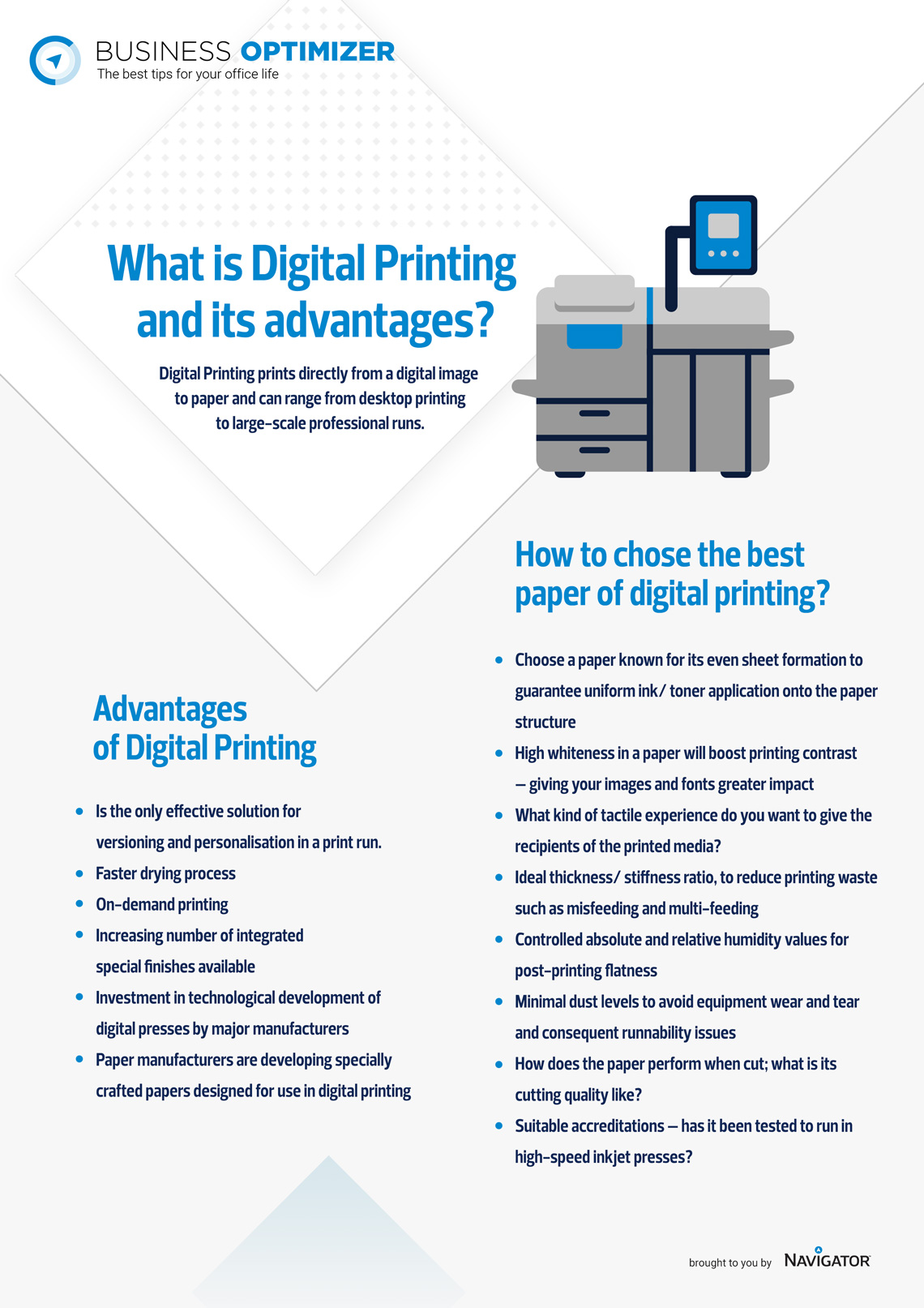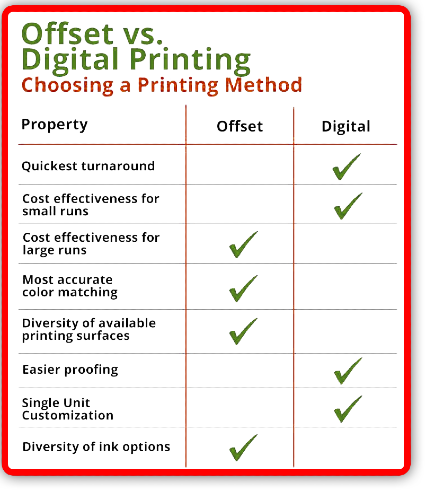8 Easy Facts About Digital Printing Described
8 Easy Facts About Digital Printing Described
Blog Article
9 Simple Techniques For Digital Printing
Table of ContentsThings about Digital PrintingSome Known Factual Statements About Digital Printing Digital Printing Fundamentals ExplainedNot known Factual Statements About Digital Printing The Facts About Digital Printing UncoveredThe Buzz on Digital Printing
Variable data printing, such as straight mail with individualized codes and addresses, is preferably matched for digital printing. Digital quick printing just needs four actions of style, evaluation, printing and binding to obtain everything done. Digital quick printing has an unrivaled advantage: print on need.According to PMMI, digital printing allows brands and producers to respond promptly to customer needs while improving the supply chain, decreasing warehousing cost and waste, and delighting in faster time to market. That all sounds fantastic, but exactly how does this modern technology do all that? The major differentiator of these modern technologies is that there are no set up charges and no plates with electronic printing.
Some Known Details About Digital Printing
According to Wikipedia, the best difference between electronic printing and traditional methods such as lithography, flexography, gravure, or letterpress - Digital Printing is that there is no need to replace printing plates in electronic printing, whereas in these analog printing approaches home plates are continuously changed. This causes quicker turn-around time and lowers expense when using digital printing.
Quick manufacturing means getting your item to market faster. It also means it's much easier and faster to make changes later on, when you transform a dish, add a SKU, or create seasonal packaging. Digital printing is very adaptable, so it's simple to make modifications to the plan layout rapidly. Everything returns to the plates.
With traditional printing approaches, short-run printing is simply not feasible. Due to the fact that a great layout can make or damage your item, digital printing constantly produces top notch, clear and colorful graphics each time.
Digital printing is the procedure of printing digital-based images straight onto a variety of media substratums. There is no need for a printing plate, unlike with offset printing. Digital files such as PDFs or desktop computer publishing files can be sent straight to the digital printing press to publish on paper, photo paper, canvas, material, synthetics, cardstock and various other substratums.
What Does Digital Printing Mean?
According to PMMI, electronic printing permits brands and producers to respond rapidly to customer demands while improving the supply chain, minimizing warehousing expense and waste, and appreciating faster time to market. That all audios wonderful, yet how does this technology do all that? The major differentiator of these innovations is that there are no set up fees and no plates with digital printing.
According to Wikipedia, the biggest distinction in between digital printing and traditional methods such as lithography, flexography, gravure, or letterpress is that there is no need to change printing plates in electronic printing, whereas in these analog printing methods home plates are repetitively look at this web-site changed. This results in quicker turnaround time and reduces cost when using digital printing.

The Ultimate Guide To Digital Printing
With conventional printing approaches, short-run printing is just not possible. Since a great design can make or damage your item, digital printing regularly creates top quality, clear and colorful graphics each time.

According to PMMI, digital printing permits brand names and producers to react promptly to consumer needs while boosting the supply chain, minimizing warehousing expense and waste, and taking pleasure in faster time to market. That all audios additional hints excellent, however exactly how does this innovation do all that? The major differentiator of these modern technologies is that there are no set-up costs and no plates with digital printing.
Digital Printing Fundamentals Explained
According to Wikipedia, the best distinction between electronic printing and conventional techniques such as lithography, flexography, gravure, or letterpress is that there is no requirement to replace printing plates in electronic printing, whereas in these analog printing methods the plates are repetitively changed. This causes quicker turnaround time and lowers price when utilizing electronic printing.
Fast production implies getting your product to market quicker. It also indicates it's easier and faster to make changes later, when you alter a dish, include a SKU, or produce seasonal packaging. Digital printing is very versatile, so it's very easy to make link adjustments to the bundle style swiftly. It all returns to home plates.

The Single Strategy To Use For Digital Printing
Digital printing is the procedure of printing digital-based photos directly onto a selection of media substratums. There is no demand for a printing plate, unlike with countered printing. Digital files such as PDFs or desktop computer posting documents can be sent directly to the electronic printing machine to publish on paper, picture paper, canvas, textile, synthetics, cardstock and other substratums.
Report this page